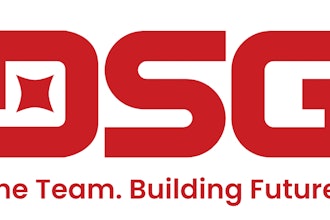This article first appeared in the 2013 Industrial Distribution January/February issue. You can view it here.
As margins are pulled ever tighter for distributors in this still uncertain economy, one way to make sure to pull them in your favor is to make a new year’s resolution to whip your warehouse into an efficient shape. One way to do this is by implementing a warehouse management system, or reevaluating the one you currently have in place, be it simple or sophisticated.
A properly implemented warehouse management system, or WMS, can help eliminate human error, identify inefficiencies in current practices, and reduce the number of shipping and product errors that cost distributors time and money. Having a system in place helps to avoid incurring those errors, and also helps to recognize and quantify them when they do – or don’t – happen on the warehouse floor.
Strategy Over Size
When a distributor implements a successful WMS solution, much of the chance of human error can be eliminated. A WMS solution can be as advanced in technology as a distributor wouldlike, with wireless handheld devices and RF technology. However, Bruce Crozier, Senior Business Software Analyst for BCR Software, stresses that the system itself is not the only factor. “WMS can mean as little as simply documenting and re-engineering the paper flow or implementing a bin location system. Something as simple as a quality check of packing could have a major positive impact, but a poorly implemented RF WMS could produce a major negative impact.” Properly identifying your company warehouse’s weakest link is necessary to getting the solution right.
The first step to implementing a system – or deciding if you need one – is to get your warehouse in order first. Gavin Clark, Chief Commercial Officer of Synergy North America, the provider of the Snapfulfil SaaS WMS, notes that for some companies, less is more. “For some operations, just moving the inventory to optimized locations would save them money,” he says. While moving inventory to better locations will often get the job done, for many distributors, this includes implementing a stock rotation strategy, helping to keep dated product moving off the shelf within its limits.
Crozier echoes this strategy, saying that a distributor should make sure they’ve got the right tools and have done everything possible in their current warehouse setup before attempting to implement anything new on too large of a scale. Organizing stock so that quicker moving items are strategically placed towards the front of the warehouse and nearer the packing stations, and the slower items towards the back will increase picker efficiency right away, eliminating extra time and extra steps for the most often picked items.
If The Next Step Is Up
Jack Logan, Strategic Account Manager for Epicor’s B2B and Warehouse Solutions division, agrees with this first step of relocating stock, noting that many ERP systems, including Epicor’s Prophet 21, will rank items by their volume and tell you exactly which ones need to be moved closer or further away from the shipping dock. If a distributor has already taken care of this issue, however, there is always more to be done. “More and more there is a need for efficiency, for inventory accuracy, and it is being driven by customer satisfaction, mounting competitive pressures, and market pressures. So if a warehouse is inefficient, it’s the first spot that the distributor will bleed profitability,” says Logan. Since tending to the biggest cut first is a good rule of thumb for ER nurses, tending to the biggest bleed, or most inefficient process, is a great place to start for distributors.
Implementing an RF-based WMS has many advantages if the need is there. Instead of expecting employees to rely on a printed ticket and manually select product of the right kind and in the right quantity, a handheld device that has been wirelessly sent for an order can physically direct the employee to the right spot on the warehouse floor and ensure that they choose the right product the first time with an affirming scan. Just as a straight line is the shortest distance between two points, an RF-enabled picking system leads employees to items using the shortest distance possible. This leads to increased profitability per order, eliminating time and human error, and allowing a distributor to do more in the warehouse with fewer people.
According to Epicor, one client was able to increase their daily orders by 15-20 percent without needing to add any additional staff, thanks to their increased efficiency and streamlined order picking process after implementing a solid WMS solution.
“Ware” There’s A Will
As with all things technology, there are multiple ways in which to deploy a WMS solution, once the decision has been made to implement one. Distributors can choose between on-premise systems and Software-as-a-Service alternatives, often considered “on-demand software.” If you go the wireless route, you can choose between RF technology and a standard 802.11 wireless network to run your software. You can also choose to work with a provider that will supply not only the software system, but the hardware as well, such as the handheld scanners or mobile computers necessary to run the program on the warehouse floor.
BCR Software’s Crozier emphasizes that this can often be the tricky part. “A handheld RF device has a much smaller display than the PC ERP software designed to work in the office. The WMS must not only be designed to communicate with the device, but also to display the appropriate screens that a worker needs to access on the specific device being used.” Companies like BCR Software often provide both the small software screens for the handheld devices and the management screens for the office PCs. However, not all companies do, so when choosing a provider, make sure that you are getting everything you need to make your implementation a successful one.
Another thing to consider is the devices themselves. Will your software provider also furnish the handhelds needed to get the WMS in place? If purchasing them separately, compatibility between systems becomes an issue, and needs to be assessed. Crozier adds that the “cost of purchasing and installing a warehouse network depends on the warehouse.” He advises to rely on third-party consultant or on a vendor with good references to aid you throughout the process of software, hardware, and network selection.
Customer Satisfaction
In the end, everything a distributor does comes down to those two words: customer satisfaction. An inefficient warehouse is not likely to lead to this in the long run.
“Mistakes are very expensive,” says Crozier. If a customer receives the wrong item, it costs them productivity, time, and money, and in turn can do even worse for the distributor. “Lost productivity, lost sales, lost freight expenses, and possible lost customers is a very big problem for distributors whose net profits are already razor thin,” he adds.
Warehouse management systems can offer distributors the tools to make their businesses more successful. Clark describes this as the ability to “work smarter, driving savings in every available area.” Whether it’s by updating their inventory locations to maximize time efficiency, or implementing a full RF-enabled WMS solution, why wouldn’t a distributor want to do that?























